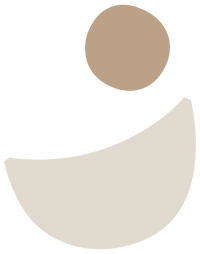As Plastic Free July is upon us, we thought there was no better time to have a closer look at hidden plastics in our household and how they are impacting our planet. Focusing on the plastics that aren't as obvious, but ones that are still making huge impacts on our ecosystems and the overall health of ourselves and our environment.
What are the Facts on Plastic?!
The facts show that out of the 380 million tons of plastic produced each year, 50% is single use plastics, 10 million tons is dumped in to the ocean, 1 million marine animals are killed by plastic pollution each year and only 9% of all plastics get recycled. If those facts aren't astounding enough, there have been many concerns over the years on the amount of microplastics that are entering our environment, particularly our waterways. MIcroplastics are particles smaller than 5mm and one major source of microplastics being released in to the environment is the washing of synthetic fabrics and materials. The most concerning thing about microplastics is that they are everywhere; in our waterways, on the land, in the food we consume, the air we breathe, literally everywhere. A recent study even showed that the average human consumed at least 50,000 plastic particles a year. They are killing our eco-systems, our wildlife, impacting our health, and if we don't take action to minimise the microplastics being produced, the health of our little ones and future generation is really going to suffer.


Images Above: Visable Plastics in our Oceans & Millions of Microplastics Close Up (Usually Invisible to the Naked Eye)
As consumers, what can we do to make a difference?
Aside from the most obvious changes of switching from single use plastics, to reusables, and focusing on purchasing quality over quantity, we can further look in to the products we are purchasing and what they are made of.
Perhaps it's as simple as reading the tags when you purchase a garment, and ensuring you are supporting a company that are producing products made with natural materials such as 'cotton' or 'bamboo'. Avoiding synthetic fabrics, such as Polyester, will not only be better for the health of your family but it will also mean no microplastics will be entering the waterways during laundering. As parents you can also look at investing in toys that are made of natural fabrics and materials such as timber, corn wadding, cotton or bamboo. Cloth nappies are a great way to minimise the amount of nappies you send to landfill (especially since they take 150 years to break down), just ensure that the Cloth Nappies you purchase are made of natural materials such as Bamboo and Cotton to avoid microplastics leaching from them when laundering. Playmats, bedding, cushions and soft toys are way more often than not filled with Polyester. Even if they claim to be 'Organic' or 'Natural' be sure to read the labels as they may have a natural outer fabric, but 9 times out of 10 they will be filled with polyester (aka plastic).

Images Above: Plastic Alternatives - Cloth Nappies & Wooden Toys
What about Recycled Plastics?
There are many companies now that are using recycled plastics in toys, bedding, clothing, footwear - and in almost anything really! It's a great way to reuse resources that would otherwise end up in landfill, and it's much better to support companies being more conscious of this, however these items are still plastic and they will continue to contribute negatively to our environment. Washing and laundering items made of recycled plastics will still cause microplastics to enter our eco-systems, so it's important to be mindful of this. It's definitely a step in the right direction, however it's important to be aware of the pros and cons when making your next purchase.

Image Above: Cotton Fields - Purchasing Items made of 100% Natural Materials is the only way to avoid Microplastics entering the Environment
Here at Bubnest we believe the health of your baby, family and the planet is the most important - that's why we don't only focus on using natural fabrics, but we also go one step further by using all Organic materials. We strongly believe that the power both businesses and consumers hold, particularly when working together as a community, can be really impactful to the health of ourselves and our planet moving forward.
With hopes for a brighter future, filled with less plastic.
Love Team Bubnest



